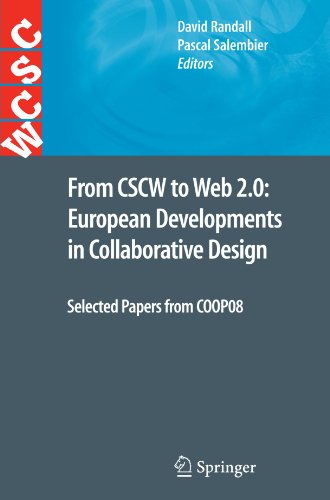

Most ebook files are in PDF format, so you can easily read them using various software such as Foxit Reader or directly on the Google Chrome browser.
Some ebook files are released by publishers in other formats such as .awz, .mobi, .epub, .fb2, etc. You may need to install specific software to read these formats on mobile/PC, such as Calibre.
Please read the tutorial at this link: https://ebookbell.com/faq
We offer FREE conversion to the popular formats you request; however, this may take some time. Therefore, right after payment, please email us, and we will try to provide the service as quickly as possible.
For some exceptional file formats or broken links (if any), please refrain from opening any disputes. Instead, email us first, and we will try to assist within a maximum of 6 hours.
EbookBell Team

0.0
0 reviewsCSCW has always been associated with support for complex work practices within organisations and a related concern with the relationship between traditional co-located work practices and newer, computer mediated, practices. Equally importantly, it has maintained a steadfastly critical, creative and rigorous approach to the problems under its remit.
Many challenges were identified in CSCW some thirty years ago, and some of these remain problematic today. However they are being progressively transformed and this edited volume contains contributions that demonstrate how these new challenges are being dealt with in a variety of ways, reflecting the balance of rigour and creativity that has always characterised the field.
Originally presented at COOP ’08 which took place in Carry-le-Rouet, France in 2008, the contributions to this volume have been substantially extended and revised. New technologies, new domains and new methods are described for supporting design and evaluation. Taking a progressive and critical stance, the authors cover a variety of themes including inter-organisational working, non task-based environments, creativity, and the development of Web 2.0 (and even Web 3.0) applications, including new cooperative mechanisms and new classification possibilities.